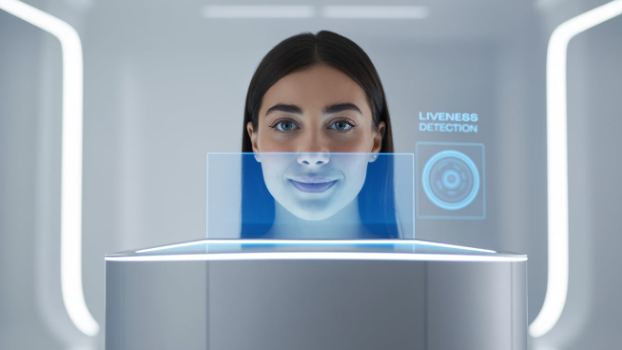We live in an incredible era where continents are now just icons on a screen. Our parents probably never thought that we’d be able to have a casual chat with someone from another country, see their smile and hear their laughter. Online communication has become more than just a tech breakthrough — it’s a new social reality that’s changed everything from work and study to our friendships and romantic relationships.
To begin with, it was just text chats with no faces, and we learned to express emotions using brackets. Then along came social networks, which let us share photos and voice messages. These days, live video is the big thing, and it makes you feel like you’re actually there and makes conversations seem super real. But this new world has its own rules and challenges.
Technology is changing the way we interact with each other
If we look back, we can see how long and interesting the journey of human communication has been. Historically, the main way to convey a message was by paper letter. People were known to wait weeks, sometimes months, for them. Every line had a special meaning and was full of anticipation. Then along came the telephone, which changed the world by letting us hear the voice of a loved one, even if they were miles away. But there was still something missing – visual contact, the way we use looks and gestures to communicate.
The internet has really changed things. It all started out small, just text forums and chats, where each of us was just a set of letters and symbols — a nickname. We created our digital images, learned to joke and argue using text. Then along came the era of social media. Our profiles had faces added, and communication became more personal. And now, the final chord for the moment — the widespread use of video.
Video calls are now a normal part of life, not something from a sci-fi film. We use them for work meetings, studying, family celebrations and just getting together with friends. This format has totally eliminated the last remaining boundaries. We’re not just hearing, we’re seeing the reactions of the people we’re talking to. We can wink at them, point with a gesture to show everything’s fine, or notice the sadness in their eyes.
But this new reality has its own rules, which are important to follow to keep communication comfortable for everyone.
I’m a big fan of live contact. Video chat is great, but it shouldn’t completely replace face-to-face meetings. Make time for real-life communication, not just digital chats.
Try to be more tolerant. Things like technical glitches, sound interference and delayed images are all just part and parcel of online dialogue. Be understanding.
Keep an eye on your digital background. The way your conversation partners see you is important for how they think about you. Keep an eye on what’s going on behind you.
Online communication is a powerful bridge that connects people. And, as with any bridge, it needs to be looked after. If we use it with respect and awareness, it can withstand any load and help us to be closer to each other, despite the distance.
Vidizzy is a video platform that helps you communicate with specific people
When it comes to video communication services, there are loads of different options out there. Some offer the thrill of chance encounters, while others offer mass broadcasts. But there are also those that focus on selectivity and comfort, striving to create a space for quality communication. One such platform is Vidizzy.
It’s basically a social network, but the main way people interact isn’t through text or photos, it’s through live video calls. This approach lets you get an idea of your potential conversation partner in advance, which makes getting to know each other more meaningful and safer.
One of the main things these platforms do is offer filters and preferences. You can specify what you’re interested in, the language you want to use, and what you hope to get out of it, whether that’s making friends, finding a romantic partner, or just practising a foreign language. The algorithm tries to offer the best options, saving time and getting rid of the need to sift through loads of random people. This makes for a really interesting conversation for everyone right from the start.
But even in a more structured environment, it’s still important to remember the basic rules of digital security.
- Trust, but verify. Don’t just take at face value all the information a new acquaintance gives you about themselves. Keep your eyes peeled.
- Make sure you keep your personal data safe. And whatever you do, don’t give your address, passport details, bank card information or other confidential information to people you don’t really know.
- Just remember to respect your personal boundaries. If the conversation starts to go off topic, you can always end it. Your comfort and security are the top priority.
- And don’t forget to try alternatives to Viddizy. For example, the video chat at https://coomeet.chat/vidizzy offers better connection quality and excellent moderation.
Platforms like Vidizzy show how people are wanting better, more thoughtful online communication. It’s not just about the fun of a random chat, but more like a digital version of a club where people with similar interests meet up. People go there for more than just entertainment, they go there to meet like-minded people, learn a language or make new connections. This is a step forward in the evolution of video chats, where the focus is on quality communication rather than quantity.
Being human in the digital world
It’s obvious that online communication, in all its forms, has become a key part of our social fabric. It’s a complex and multifaceted phenomenon that can’t be assessed unequivocally. It can make you happy and help you out, but it can also let you down. But the way it’s spread depends on us, not the algorithms.
We’ve come a long way from those old anonymous text windows to high-quality video calls, where you can see every emotion on the person you’re talking to. Services like Vidizzy show that the trend is moving towards personalisation and awareness. People are sick and tired of chaos and meaningless scrolling. They’re after depth, common interests, and the chance to be heard and understood. Technology is adapting to this demand by offering more and more accurate ways to find like-minded people online.
The real danger isn’t in the platforms themselves, but in letting them completely replace the real world. When the number of online friends becomes more important than the quality of live communication, we risk losing something very important — genuine, unfiltered and unedited human closeness.
But there’s a big opportunity here too. The chance to be yourself — real, alive, emotional — and to share this with anyone, anywhere in the world. The art of online communication is a modern skill that requires empathy, attention and courage. The courage to be open, even through a screen. The confidence to set boundaries. The courage to seek and find sincerity in all the digital noise. It’s this human element, brought into the digital world, that makes any chat, on a messenger or video call, so valuable and worthwhile.












